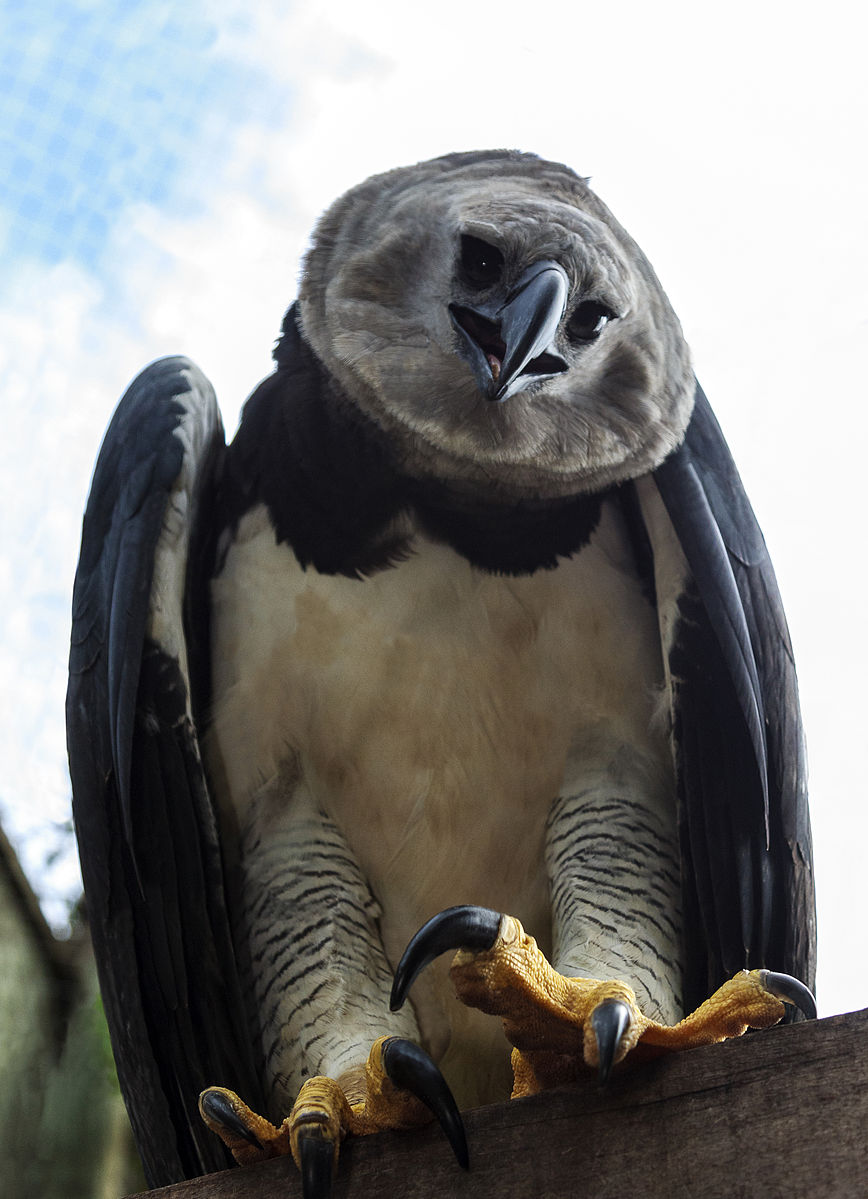The Harpy Eagle (Harpia harpyja) is a magnificent bird of prey known for its impressive size, distinctive appearance, and crucial role in maintaining the ecological balance of tropical rainforests in Central and South America. One of the most captivating aspects of this species is the intricate process of Harpy Eagle egg hatching, which is the focus of this comprehensive blog post.
The Incubation Period
The Harpy Eagle typically lays one or two eggs in a clutch, and both parents actively participate in the incubation process. The female Harpy Eagle takes on the majority of the incubation duties, with the incubation period typically lasting between 53 to 58 days.
During this time, the parents take turns sitting on the eggs to keep them warm and protect them from potential threats. This dedicated parental care is essential for the successful hatching of the Harpy Eagle eggs.
Challenges in Captive Breeding
 Image source: Águia Harpia – Harpy Eagle by Jonathan Wilkins
Image source: Águia Harpia – Harpy Eagle by Jonathan Wilkins
Hatching Harpy Eagle eggs in captivity can be a challenging endeavor due to various factors, including the inexperience of the parents, the availability of appropriate nesting materials, and the risk of egg breakage.
In a breeding project at the Los Angeles Zoo, the first two Harpy Eagle eggs laid by a pair were lost within hours due to breakage. However, the third egg hatched after 56 days of incubation, and the eaglet survived for 16 days before passing away due to unknown causes.
Improving Hatching Success in Captivity
To increase the success rate of Harpy Eagle egg hatching in captivity, it is crucial to provide the parents with a suitable nesting environment. This includes a sturdy and secure nest platform, appropriate nesting materials, and adequate space for the birds to move around.
Additionally, closely monitoring the parents’ behavior and intervening when necessary, such as replacing broken eggs with artificial ones, can help improve the chances of successful hatching.
Successful Hatching Efforts
Despite the challenges, there have been several successful Harpy Eagle egg hatching efforts in captivity. At the World Center for Birds of Prey, a Harpy Eagle egg hatched after a 55-day incubation period, resulting in the birth of a healthy chick.
Similarly, at Zoo Miami, a rare Harpy Eagle hatched in December 2015, marking a significant achievement for the zoo’s conservation efforts.
The Importance of Harpy Eagle Conservation
The successful hatching of Harpy Eagle eggs in captivity is a crucial step towards the conservation and preservation of this magnificent bird species. As apex predators, Harpy Eagles play a vital role in maintaining the ecological balance of their rainforest habitats, and their survival is essential for the overall health of these fragile ecosystems.
By understanding the intricacies of Harpy Eagle egg hatching and implementing effective conservation strategies, we can ensure the continued existence of these majestic birds for generations to come.
Conclusion
The process of Harpy Eagle egg hatching is a complex and delicate one, requiring careful attention to the parents’ behavior, nesting environment, and the eggs themselves. While there are challenges to overcome, the successful hatching of Harpy Eagle eggs in captivity is a testament to the dedication and efforts of conservation organizations and researchers around the world.
By continuing to study and support the conservation of the Harpy Eagle, we can not only ensure the survival of this remarkable species but also contribute to the overall health and balance of the tropical rainforests they call home.


